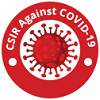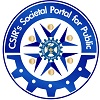Welcome, Saturday , Nov , 22 , 2025 | 18:29 IST
Welcome, Saturday , Nov , 22 , 2025 | 18:29 IST


The new alpha300 series consists of advanced Raman, Atomic Force Microscopy (AFM) and Scanning Near-field Optical Microscopy (SNOM) imaging systems. Its sophisticated design ensures exceptionally high-throughput and sensitivity. A unique modularity allows for single-technique solutions as well as correlative imaging configurations. The flexibility of the WITec's Raman microscope alpha300 R series allows the system to adapt to all requirements, combine different imaging techniques and to evolve to meet new or expanded needs. Raman spectroscopy is commonly used in chemistry to provide a structural fingerprint by which molecules can be identified. The spectrometer consists of a two laser source (532 nm green laser and 785nm NIR laser) for the excitation of the molecular bonds present in the molecule. It has also a CCD detector to measure the scattering light and gives the characteristic Raman spectrum. Raman Spectroscopy is most useful for identifying chemicals that are either organic or inorganic. It can be utilized to quantitative some components of an unknown mixture. It can be applied to the analysis of solids, liquids, and gasses. These measurements provide a sensitive probe of the nature of the functional groups those are present in the molecules. The WITec Atomic Force Microscope alpha300 A is a reliable, high-quality nano-imaging system integrated with a research-grade optical microscope and provides superior optical access, easy cantilever alignment and high-resolution sample survey. The alpha300 S is a user-friendly Scanning Near-field Optical Microscope (SNOM) that combines the advantages of SNOM, confocal microscopy and AFM (Atomic Force Microscopy) in a single instrument. The alpha300 S uses unique micro-fabricated SNOM cantilever sensors for optical microscopy with spatial resolution beyond the diffraction limit.





